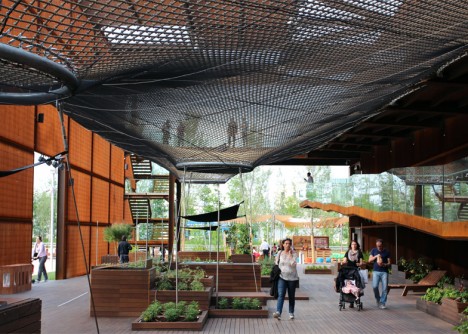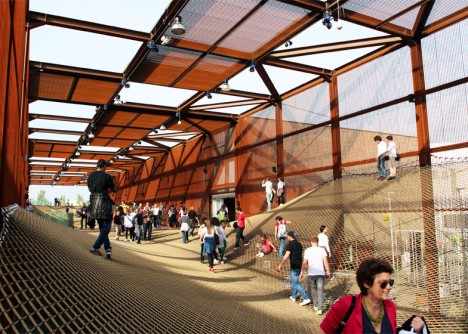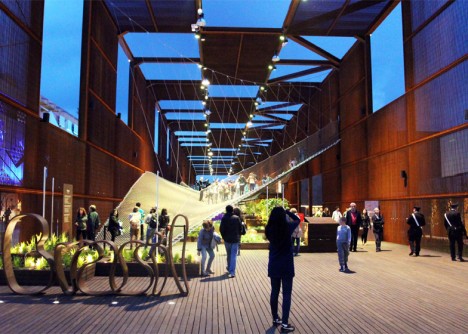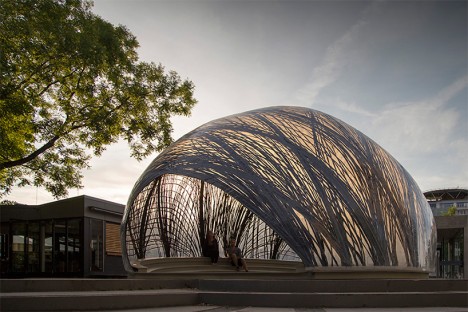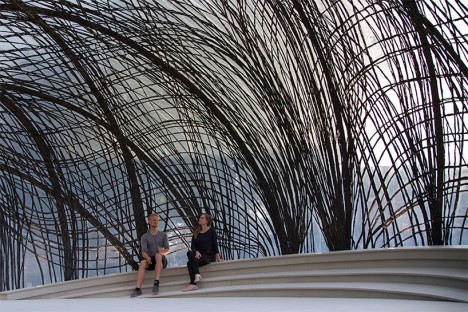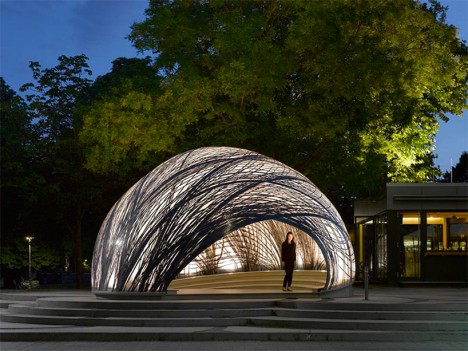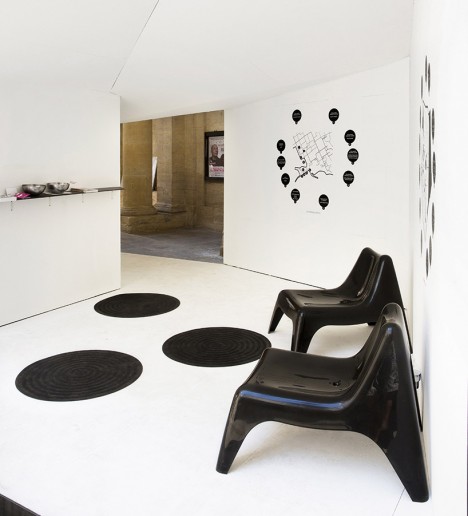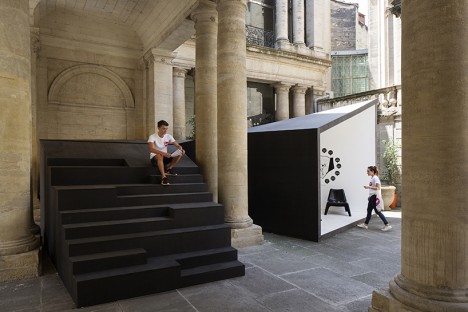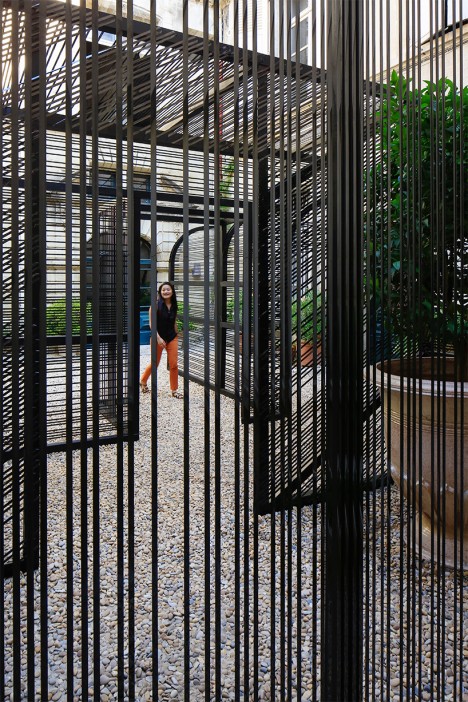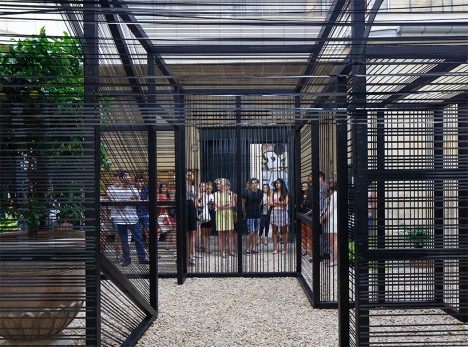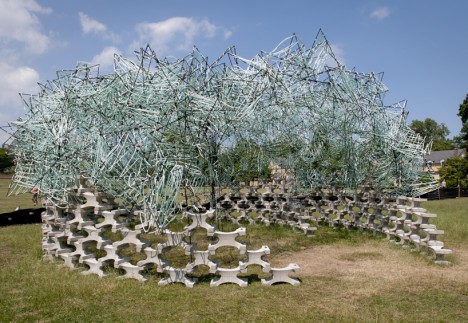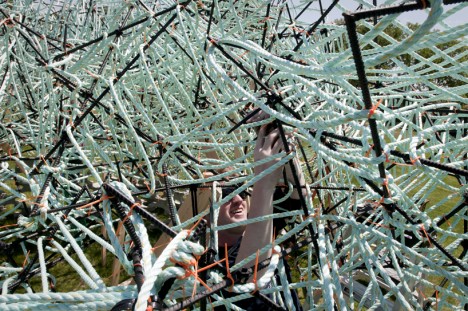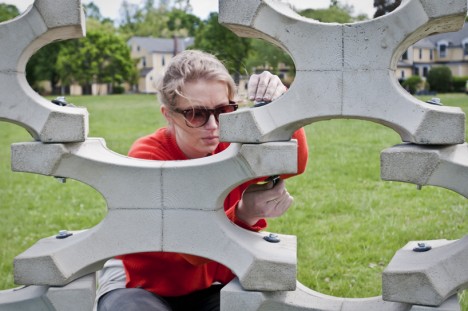Net Ramps at Brazil’s Pavilion for Expo 2015
Nets stretched tight within an open-air iron structure invite visitors to take a tour of Brazil’s 2015 pavilion, which includes a garden, restaurant, cafe and bar, from an unusual perspective. The transparency of the rope mesh allows guests to look down onto the planters below, containing an assortment of South American species.
Pavilion Inspired by Subaquatic Spider Nests
The nest of the water spider, which constructs a reinforced air bubble to survive under the surface, inspired this beautiful pavilion at the University of Stuttgart. The spider builds a horizontal sheet web, places an air bubble underneath it and reinforces it from within with an arrangement of fibers. The result is an interesting example of how structures in nature can inspire new methods of designing and building architecture.
NAS Pavilion at the Festival of Lively Architecture
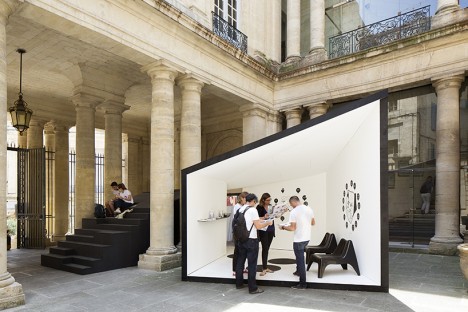
Slotted around the columns of Hotel Saint Come, this pavilion is among a series of temporary installations that guide visitors through private mansions, courtyards and other settings in Montpelier, France that are usually closed off to the public. NAS architecture designed ‘Scape’ as the main information point for the Festival of Lively Architecture, contrasting matte black and white wood with the weathered neutrals of the older structure it inhabits.
Temporary Structure Wound with Reclaimed VHS Tape
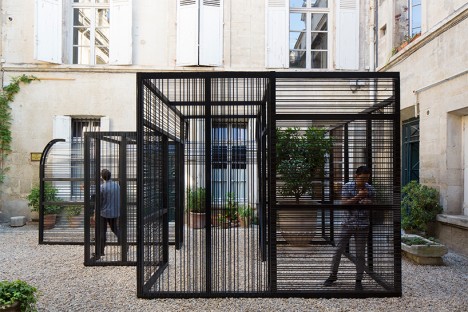
What looks like a pretty solid structure from afar becomes far more ephemeral when you realize that the seemingly solid bars making up most of its walls are made of nothing more than reclaimed VHS tape. ’Trans(inter)terence’ is an installation by Syracuse University’s School of Architecture at the Lively Architecture Festival, set within the courtyard of Hotel Audessan.
Oyster Pavilion Will Become a Marine Life Condo
Once it’s done hosting humans as a social and information space on Governor’s Island over summer 2015, this pavilion by BanG Studio will become home to oysters and other marine life. Made of concrete ‘reef blocks,’ steel rebar, nylon rope and hose clamps, it will be used by the One Billion Oyster Project in its harbor restoration work in New York’s waterways. The steel triangles in the canopy will be filled with recycled oyster shells to encourage oysters to make a home and reproduce.
